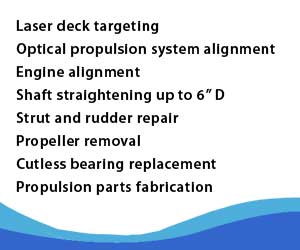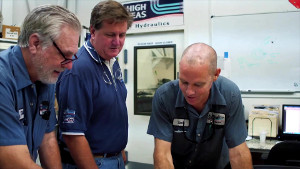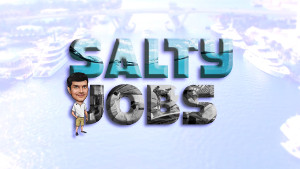Technical Articles
Here’s where I’ve posted information about some of the more common technical issues we run into while solving yacht vibration problems. I’ve done so in hopes they might provide some helpful background information for you in your quest for success in dealing with your own yacht vibration and running gear issues. If you are just starting out, get a great overview by reading “So you’ve bent the props… Now What?”
The problem is I don’t know if the technical questions I’ve selected are those you might consider to be the most helpful. It would be great if you posted a comment asking for more clarification on something that puzzles or intrigues you that you’d like me to talk about in a post or as a longer technical article.
Also, if there’s another site that you believe has as good information—or even makes a good case for contradicting my point of view—feel free to link to it in your comments so we can share it with others and so I might either learn from it or have an appropriate response to it.
This is one of the best ways I know to expose you to enough facts so you can make up your own mind about the right company to do your work.
- Optical Scope Alignment or “Scoping” for short, is the most advanced method for obtaining a perfect marine shaft alignment with struts shaft logs, engines or v-drives… more
- Video Scoping takes the advanced Optical Scope Alignment process to a whole new customer service level…more
- Deck Targeting is a process of making sure the shape of a vessel in the water is the same when it is blocked on land. Today’s lightweight, keel-less fiberglass yachts… more
- Shaft Weld-overs, also known as cladding (in ABS terminology), is the process of repairing a worn or damaged area on a propeller or rudder shafts. Shafts can be damaged by… more
- Crevice Corrosion is not commonly understood and can be damaging to your shafts. This article will explain, in depth, the phenomena, preventive measures and repairs.
- In vs. Out of the Water Alignments is a debate that is heard by many when considering an engine alignment. Read on to understand the difference.
- A proper Strut Alignment is a critical component to an overall smooth running propulsion system. All too often…more
- Some Struts require a Float Alignment to obtain a precision alignment of the cutlass bearings. This is primarily done on steel or aluminum constructed yachts.


 Click to watch the video of a day at High Seas Yacht Service.
Click to watch the video of a day at High Seas Yacht Service. Click to watch Marine Industries Association of South Florida video featuring Salty Jobs at High Seas Services.
Click to watch Marine Industries Association of South Florida video featuring Salty Jobs at High Seas Services.